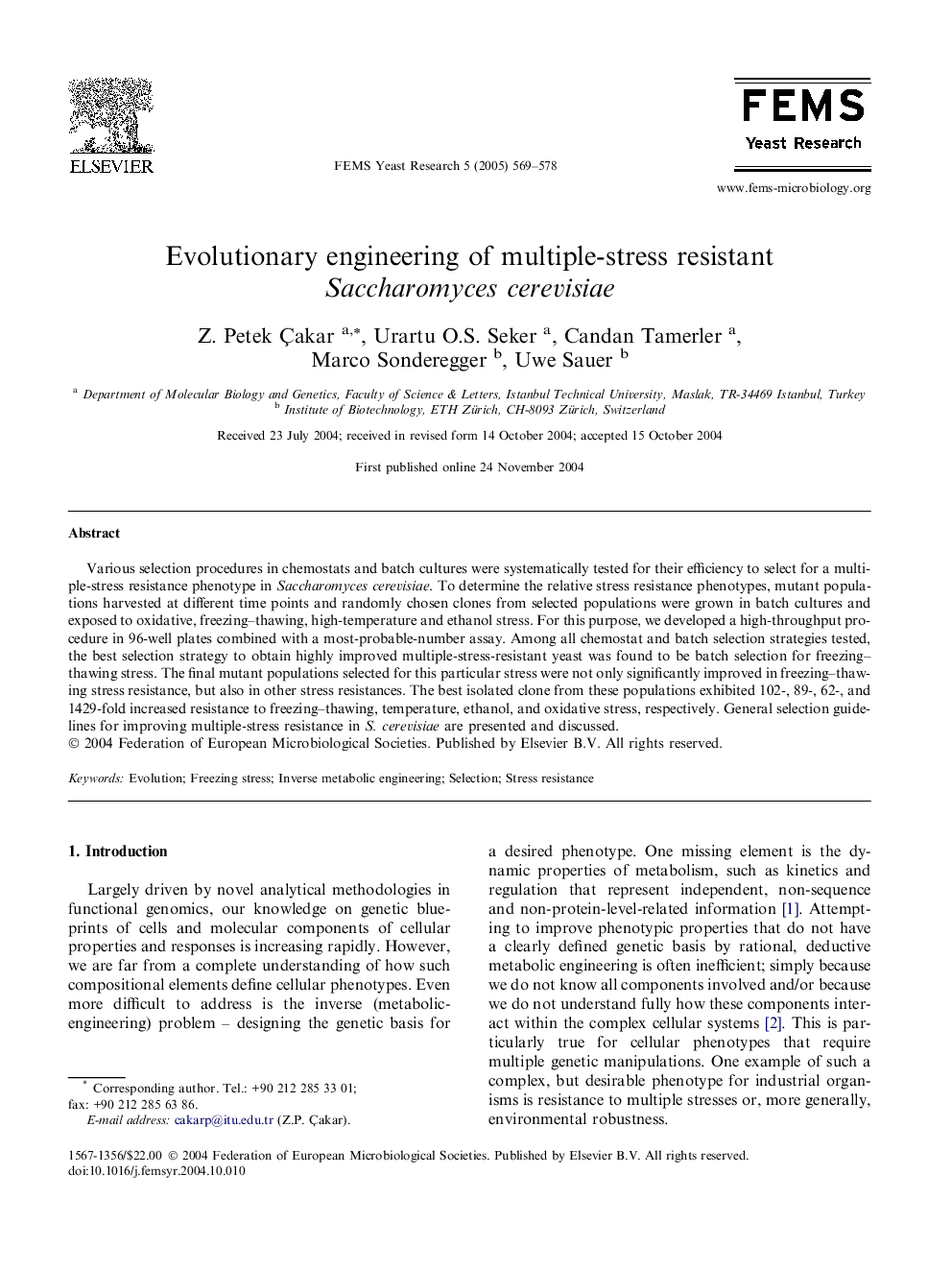| Article ID | Journal | Published Year | Pages | File Type |
|---|---|---|---|---|
| 9278977 | FEMS Yeast Research | 2005 | 10 Pages |
Abstract
Various selection procedures in chemostats and batch cultures were systematically tested for their efficiency to select for a multiple-stress resistance phenotype in Saccharomyces cerevisiae. To determine the relative stress resistance phenotypes, mutant populations harvested at different time points and randomly chosen clones from selected populations were grown in batch cultures and exposed to oxidative, freezing-thawing, high-temperature and ethanol stress. For this purpose, we developed a high-throughput procedure in 96-well plates combined with a most-probable-number assay. Among all chemostat and batch selection strategies tested, the best selection strategy to obtain highly improved multiple-stress-resistant yeast was found to be batch selection for freezing-thawing stress. The final mutant populations selected for this particular stress were not only significantly improved in freezing-thawing stress resistance, but also in other stress resistances. The best isolated clone from these populations exhibited 102-, 89-, 62-, and 1429-fold increased resistance to freezing-thawing, temperature, ethanol, and oxidative stress, respectively. General selection guidelines for improving multiple-stress resistance in S. cerevisiae are presented and discussed.
Related Topics
Life Sciences
Immunology and Microbiology
Applied Microbiology and Biotechnology
Authors
Z. Petek Ãakar, Urartu O.S. Seker, Candan Tamerler, Marco Sonderegger, Uwe Sauer,
